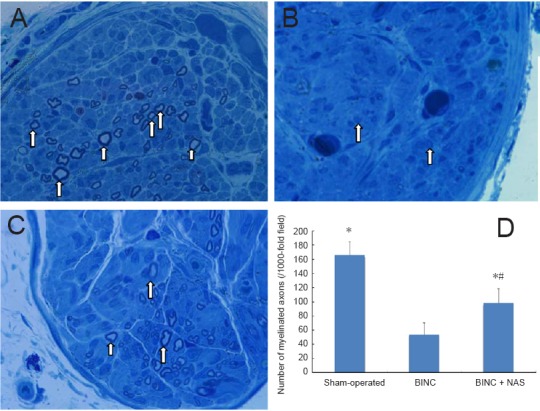Figure 3.

Effect of NAS on the number of myelinated axons in dorsal nerves of a rat model of cavernous nerve injury.
(A–C) Myelinated axons (arrows) in dorsal nerves (original magnification, 1000×). (A) Sham-operated group: Abundant myelinated axons of cavernous nerves with normal morphological appearances; (B) BINC group: the number of myelinated axons decreased substantially and displayed atrophy; (C) BINC + NAS group: a significant increase in the regeneration of well-orientated myelinated axons relative to BINC group; (D) the number of myelinated axons. Data are expressed as the mean ± SD (one-way analysis of variance followed by Student-Newman-Keuls test). *P < 0.05, vs. BINC group; #P < 0.05, vs. sham-operated group. BINC: Bilateral cavernous nerve-crush injury; NAS: neural-like cells from adipose-derived stem cells.
